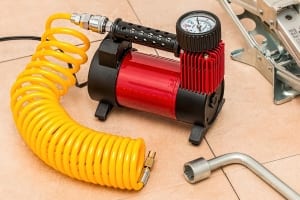Air Compressors 101, How Air Compressors Work

Not anymore! Let’s help you find all the necessary information that gives you the confidence to pick the right tool for your job.
Let’s start with understanding the “Air basics.”
Air Basics- Decoding The Science
Many of you might be well acquainted with the fact that a compressor works by sucking in the air and squeezing it through the components present inside the product to power the air tools. So, once it attains the PSI (air pressure), its duty cycle completes. So, you need to consider the air volume generated by the compressor when choosing the right one for your tools.
But, the question remains.
How Do They Work?
Mainly every air compressor you find in the market works on the same principle?? Boyle’s Law. As per this law, if you keep the temperature constant, the pressure in the container will be inversely proportional to the volume of the container.
So, if you reduce the volume, you can generate loads of pressure, creating a form of untapped energy to power various tools or machines. Air compressors use the exact mechanism, thereby becoming quite advantageous for a variety of industrial equipment to spray guns or drills.
Compressing Air Mechanisms- Finding The Right Fit For Your Needs
You might find a plethora of methods, but primarily compressors use pistons or rotary mechanisms to get the job done. Let’s understand both one by one.
In the case of a piston compressor, an electrical or a gas motor rotates the crankshaft. This is how it turns the piston in and out, thereby increasing the pressure of the air. This air is then released through valves and stored in a tank from where one can use the stored air to power their tools.
Contrary to that, a rotary compressor uses a rotary mechanism for air compression. Hence, providing an output as a steadier stream. You will find two types in this option. One is the Rotary vane, and the other is the Rotary Screw Air Compressor.
The difference is the presence of the motors. In the former, a single rotor along with the slot contains offset sliding vanes. They create a compression pocket by sliding in and out of the rotor. And the latter one uses parallel rotors with screws that intersect longitudinally. During the air compression process, two motors mesh together, leading to the desired output.
Wrapping up
Everyone understands that if you want to do the job right, you will require the right tool. Isn’t it? So, it would be a great idea to ask yourself the right questions right from the start, like “What do I need an air compressor for?” or “How much power do I need for my tools?” This will be a great way to find the suitable compressor for your job.
Hopefully, the information provided above will give you the right head start to choosing an accurate product to get the job done correctly.












Leave a Reply
Want to join the discussion?Feel free to contribute!